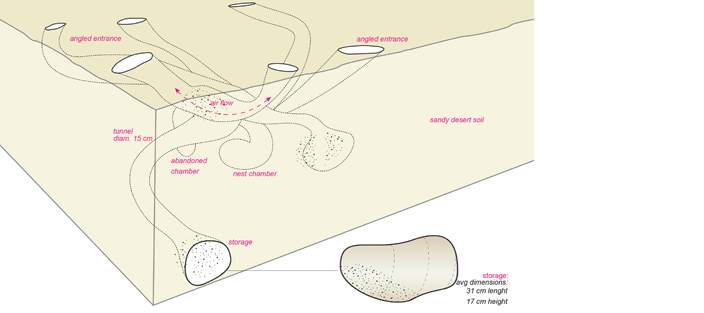
 |
 |
 |
 |
 |
HABITAT: Found in parts of the Western U.S, Southwestern U.S., Northern and Central Mexico, specifi cally desert areas where the outside desert temperature during the day does not exceed 49°C, and the night temperature drops to a minimum of -7°C. During the day, these rats stay underground where the air is consistantly more humid. They only come out for a few hours at night to search for food. This allows them to avoid contact with, the dry hot climate, and many predators. FOOD MANAGEMENT: Storage and management of seed caches by rodents can directly affect spore germination and mold growths. Seeds at the greatest depths are relatively dry and mold free. Caches nearest the surface are moist and mycologically very active. It has been found that kangaroo rats move seeds to different depths and humidities based on their levels of moldiness. DESIGN: For the Kagaroo Rat, desert living involves great challenges such
as: scarce water, predators and high temperature fl uctuation. In
response to this, the rat has evolved to become perfectly adapted
both physiologically and environmentally. Its above ground life
is limited to seed collection; whilst underground, its life involves
managing and navigating a complex system of chambers and
tunnels providing subtly varied climatic conditions, temperature and
humidity wise. This projects emulates this perfected adaptation in
designing storage systems for crops. The controlled temperature
and humidity present in the underground, prevent the harvested
crop from spoiling, while providing the workers a more pleasant
environment with minimum energy expense. Multiple chambers
connected to the ground level with tunnels permit human and crop
movement while allowing for air and light to penetrate deep in the
earth. |
||||
